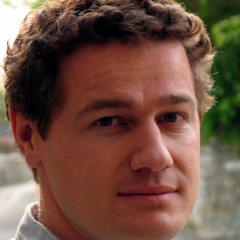You are not currently logged in. Please create an account or log in to view the full course.
History of the Atomic Model
- About
- Transcript
- Cite
Atomic Structure and Mass Spectrometry
In this course Professor James McCullagh (Oxford University) lectures on atomic structure and mass spectrometry, and how the two fields of research have been woven together for decades. What is an atom, and what is made of? These were the questions that perplexed physicists and chemists for decades, going through many iterations of theories. We begin (i) with the history of the atomic model, dating back from the Ancient Greeks all the way to modern science, learning the techniques scientists used to learn more about the atom; (ii) then learning how these tools developed into the first prototypes of mass spectrometers; (iii) and discussing what measurements of an atom were made when observing atoms in mass spectrometers, including atomic number, mass number and relative atomic mass; (iv) and how these values are determined in modern mass spectrometers by electrospray and electron ionisation; (v) then focusing on Time-of-Flight, the most common metric measured to determine the mass of a charged particle; (vi) then moving onto discussing how we interpret mass spectra; and (vii) the ways in which mass spectrometry is used in modern-day research chemistry, such as in paleodietary studies.
History of the Atomic Model
In this mini-lecture we learn where the journey of learning about the structure of the atom begins: way back with the Ancient Greeks. It was said by them that the atom was the smallest indivisible unit of matter, and for centuries this was thought to be the case. It wasn’t until scientists in the 1800s began to develop equipment that could analyse the structure of atoms more closely. What were they made of? We look at the work carried out by famous scientists of the time: J.J. Thomson, Ernest Rutherford and Niels Bohr, and their contributions to atomic science. We learn about the models they proposed, including the plum pudding model and the planetary model, and the experiments they carried out to develop the science further.
Cite this Lecture
APA style
McCullagh, J. (2022, January 17). Atomic Structure and Mass Spectrometry - History of the Atomic Model [Video]. MASSOLIT. https://massolit.io/courses/atomic-structure-and-mass-spectrometry/mass-spectrometry-and-paleodietary-studies
MLA style
McCullagh, J. "Atomic Structure and Mass Spectrometry – History of the Atomic Model." MASSOLIT, uploaded by MASSOLIT, 17 Jan 2022, https://massolit.io/courses/atomic-structure-and-mass-spectrometry/mass-spectrometry-and-paleodietary-studies

